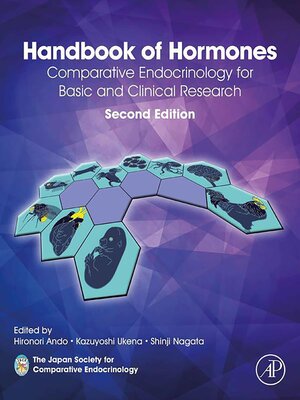Handbook of Hormones
ebook ∣ Comparative Endocrinology for Basic and Clinical Research
By Hironori Ando

Sign up to save your library
With an OverDrive account, you can save your favorite libraries for at-a-glance information about availability. Find out more about OverDrive accounts.
Find this title in Libby, the library reading app by OverDrive.



Search for a digital library with this title
Title found at these libraries:
| Library Name | Distance |
|---|---|
| Loading... |
Handbook of Hormones: Comparative Endocrinology for Basic and Clinical Research, Second Edition presents a catalog of fundamental information on the structure and function of hormones from basic biology to clinical use, offering a rapid way to obtain specific facts about the chemical and molecular characteristics of hormones, their receptors, signaling pathways, and the biological activities they regulate. The book's stellar editorial board, affiliated with the Japan Society for Comparative Endocrinology, brings together authors that present a compelling structure of each hormone with a consistent presentation that provides a primer surrounding the plethora of hormones that now exist.
Comparative endocrinology continues to rapidly expand and new information about hormones is being produced almost daily, making it important to stay up-to-date. Hormone, paracrine, and autocrine factors have been identified as key players in a range of different systems, including immune, musculoskeletal and cardiovascular. Frontiers between disciplines are being blurred and many scientists in fields other than endocrinology are interested in hormones. Scientists now have the unprecedented opportunity to look from invertebrates to vertebrate and identify novel regulatory factors and understand their function and how they determine an organism's physiology and survival. - Presents hormones in groups according to their origin so that readers can easily understand their inter-relation - Includes 47 new hormones, such as neuropeptides, cytokines, growth hormones, biogenic amines and amino acids that are important for cell to cell communication via endocrine, paracrine and neurotransmitter signaling - Summarizes the current knowledge of hormone evolution based on comparative genome resources, such as synteny, genome sequence and comprehensive phylogeny - Covers a wide range of information on hormones, from basic information on structure and function across vertebrate and invertebrate phyla to clinical applications - Collates key information on 259 hormones and 47 groups/families







